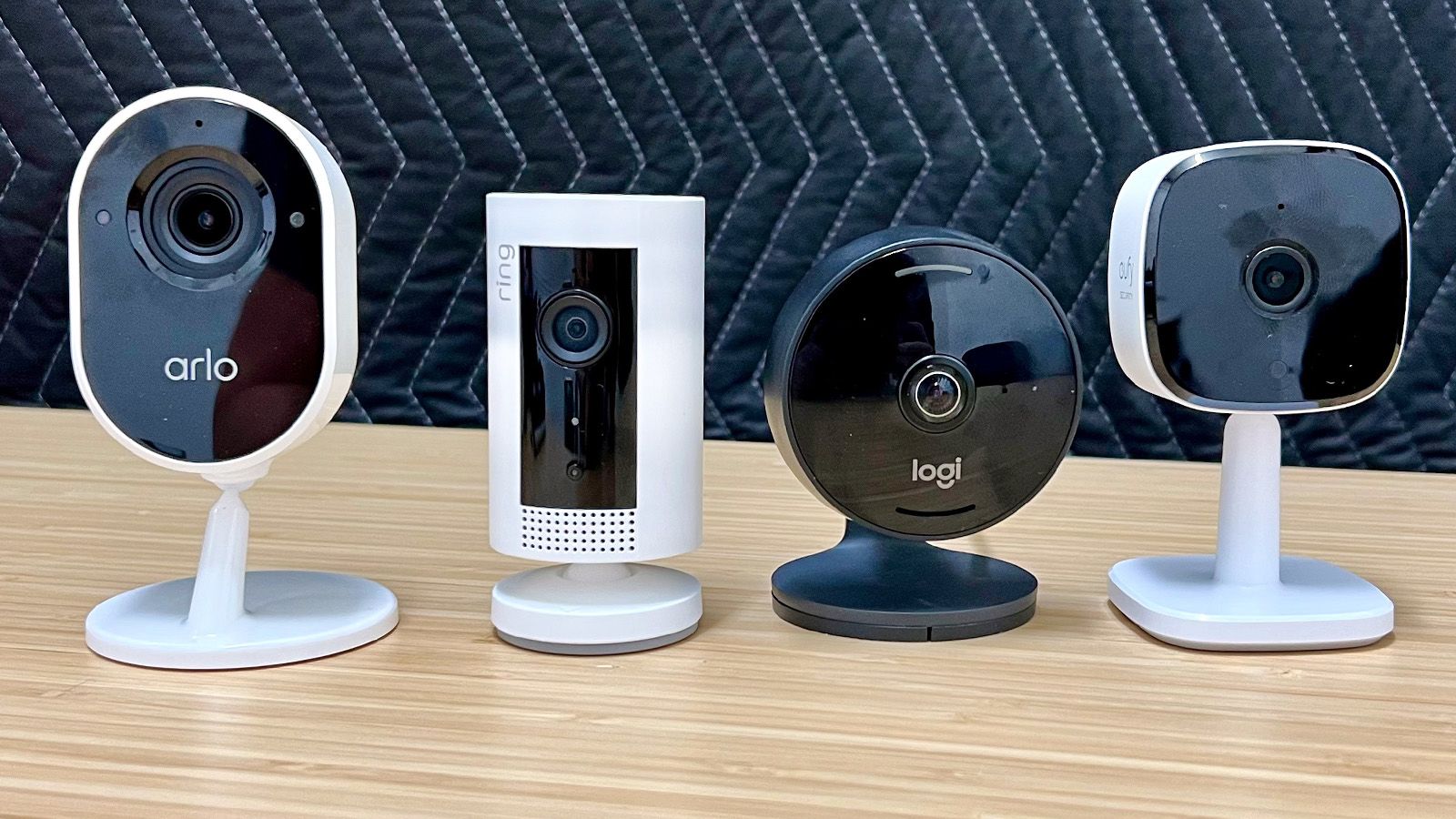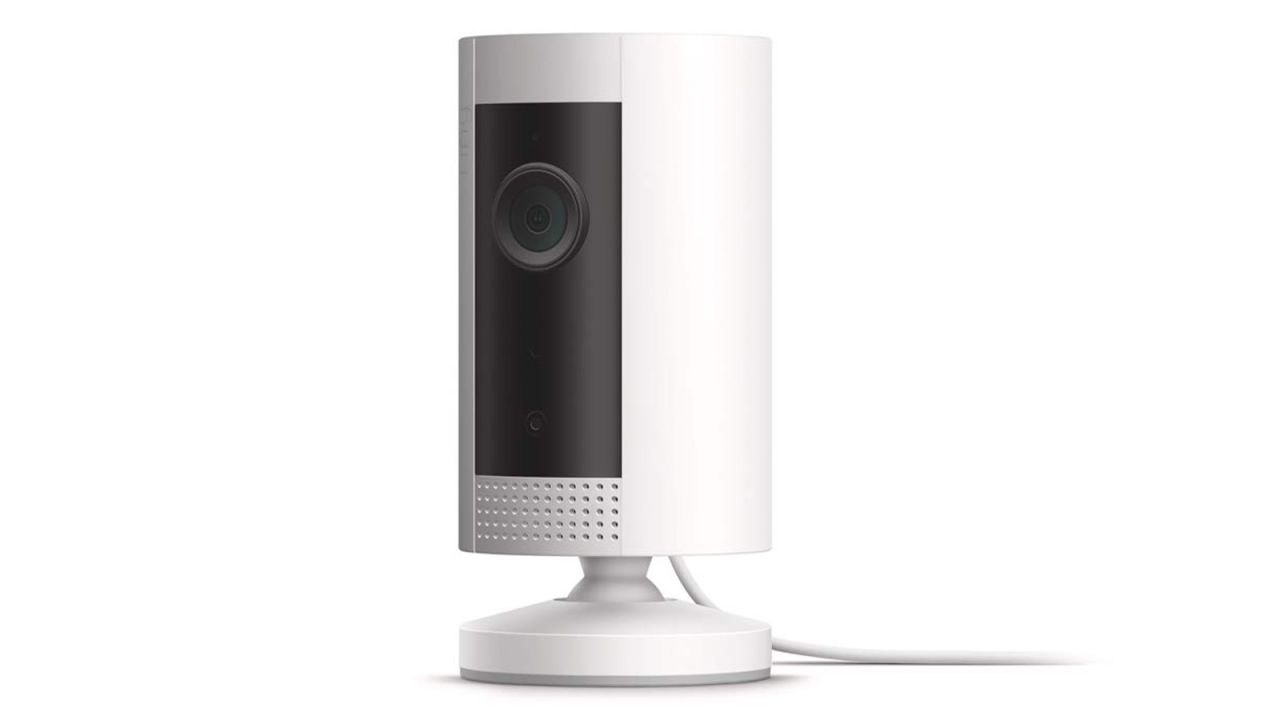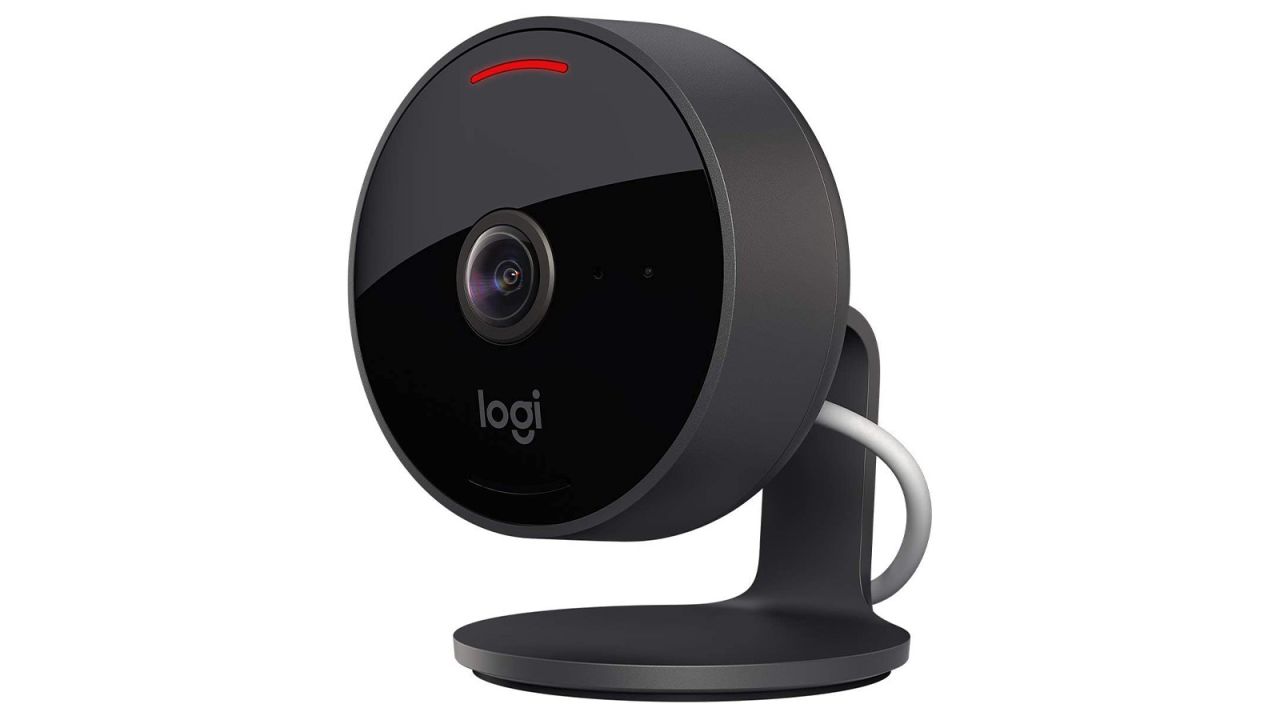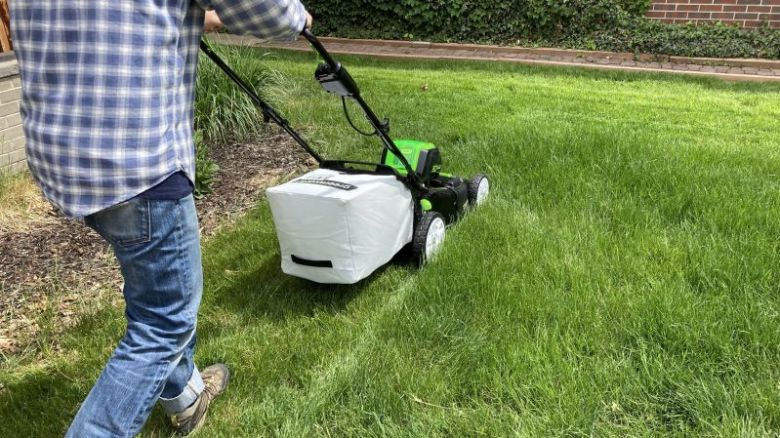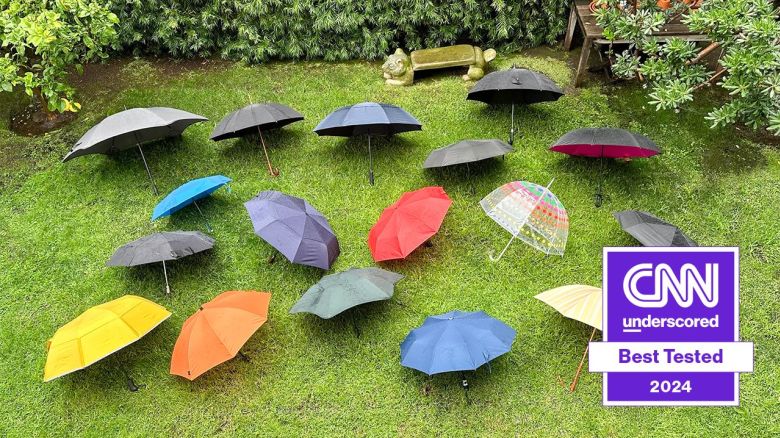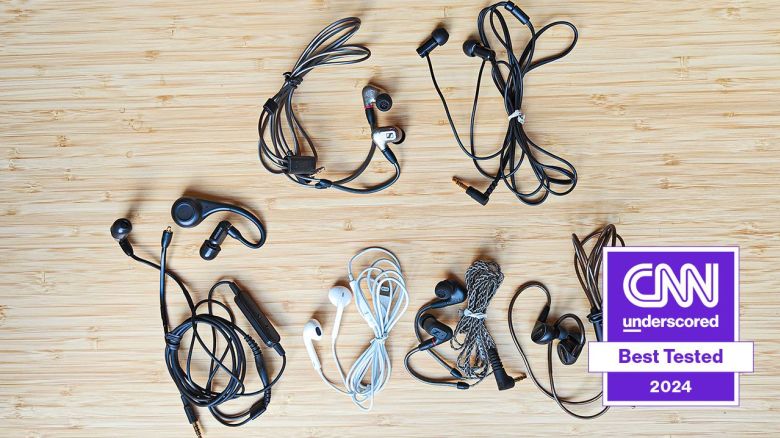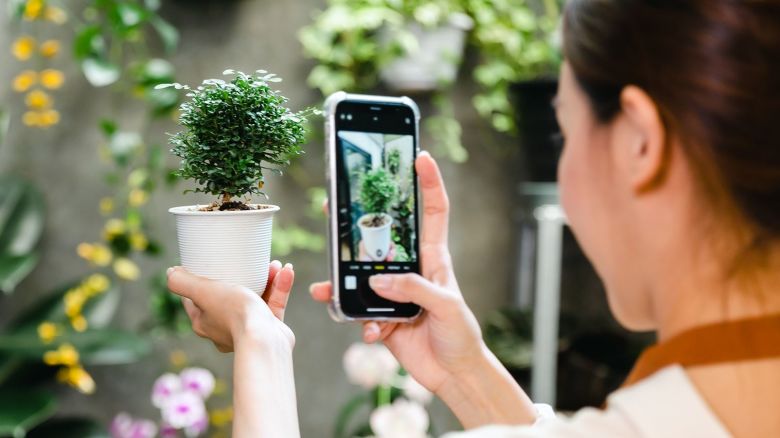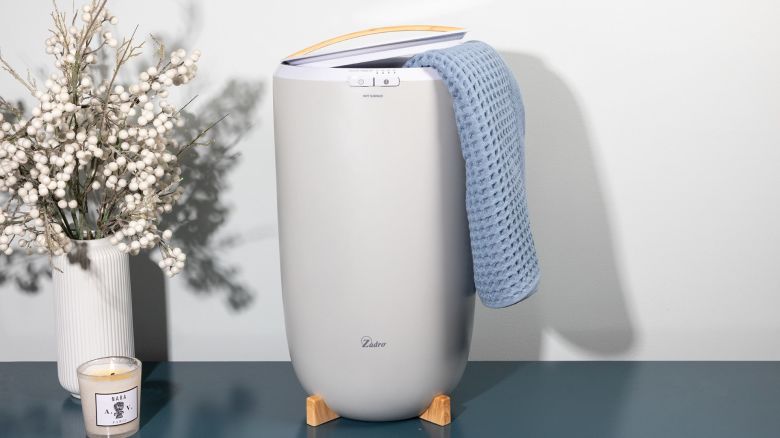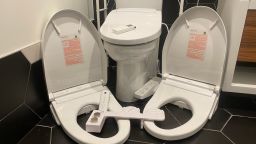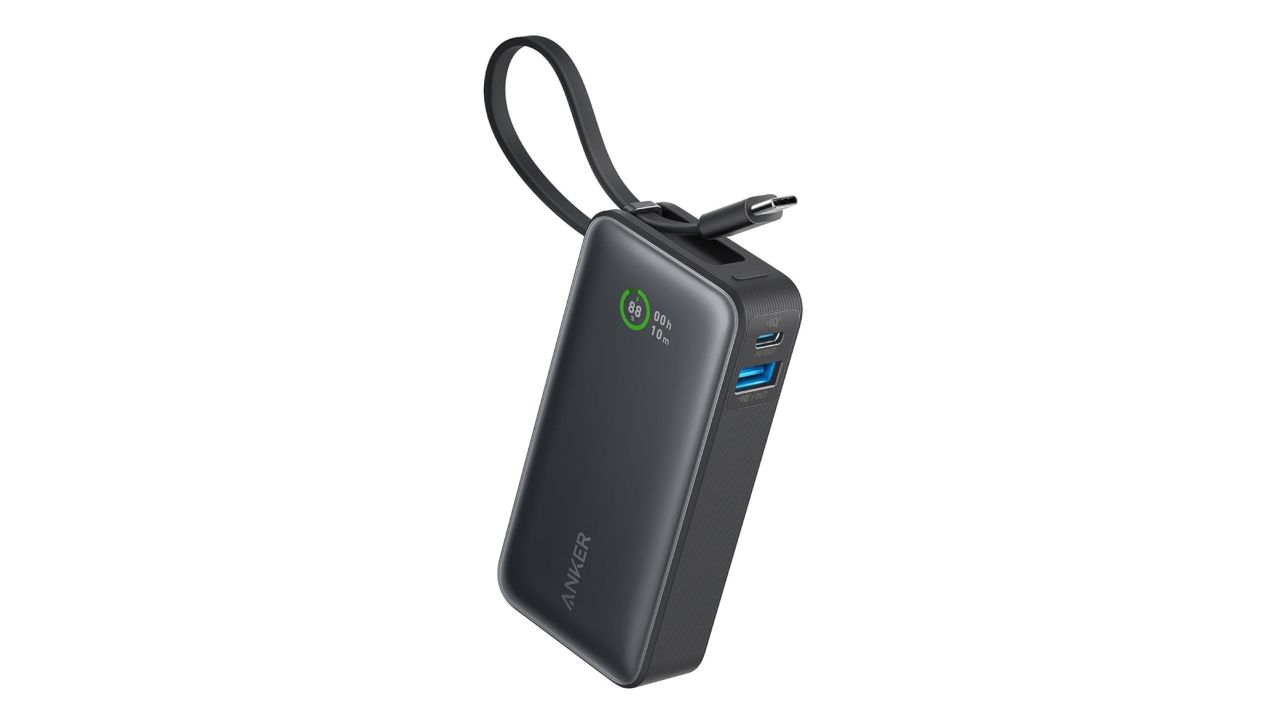Indoor home security cameras can add an extra layer of peace of mind to your home or apartment. They allow you to check in and talk to your kids or a pet when you aren’t home. And they can be an important part of your home security and safety plan, giving you visual evidence of a break-in, fire or anything else that might happen while you’re away.
To find the best indoor home security camera for you, we spent the last month with nearly a dozen cameras set up and watching our every move throughout the day. The stream of alerts and messages when we were — and weren’t — in our home office has been eye-opening. Below are three fantastic cameras sure to fit anyone’s needs to add another piece of the home security puzzle.
Best indoor home security camera overall: Arlo Essential Indoor Security Camera
$100 $50 at Best Buy or $60 at Amazon
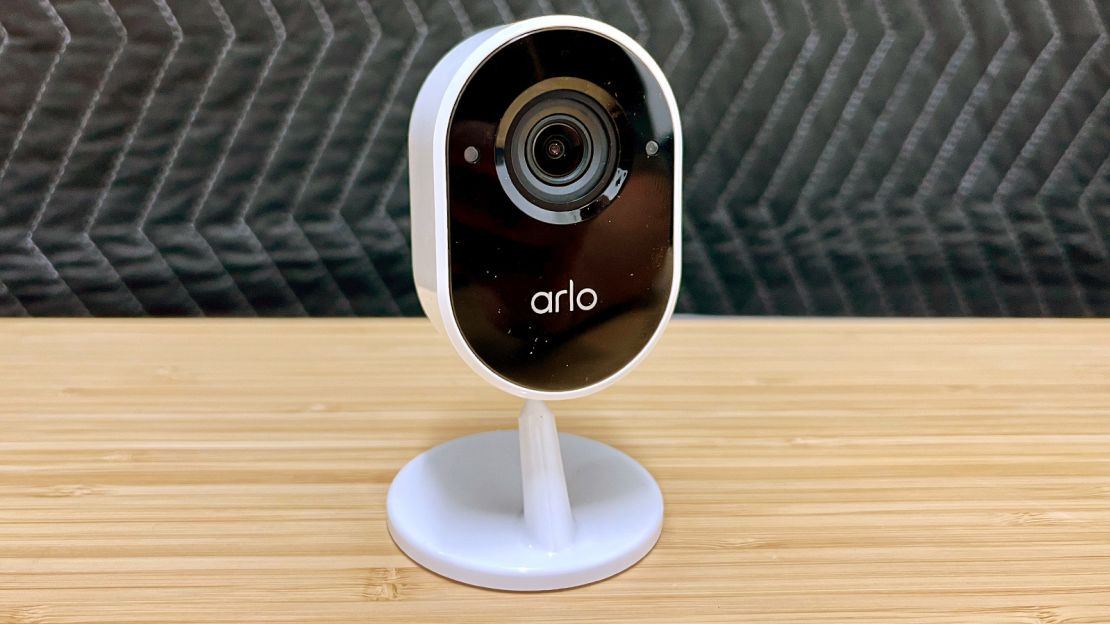
Arlo’s Essential Indoor Security Camera checks all of the boxes when it comes to what we’re looking for in an indoor home security camera. Video quality is fantastic, two-way audio is clear and crisp, it has a built-in privacy shutter that turns the camera and microphone off with the push of a button, you get tons of alert options and the app is easy to use.
For $99.99, you get a camera that captures 1080p video with a 130-degree field of view. The video is colorful and full of detail, making it easy to identify objects and people. A built-in infrared LED light provides night-vision capabilities.
Arlo’s app is easy to use and it’s simple to make adjustments to the camera, such as controlling the video’s exposure, adding activity zones or toggling the physical privacy shutter on or off. When the shutter is closed, the microphone and camera are completely disabled, giving peace of mind that your private conversations and moments aren’t being captured.
You can connect the Essential Indoor Security Camera to Alexa, Google Home and even Apple HomeKit (hub required). Support for all three major smart home platforms isn’t common with security cameras, giving Arlo an edge above the competition in this regard (most purchasers will likely stick with a single platform, but the flexibility provides some future-proofing should you ever switch).
Arlo Secure subscription plans start at $2.99 a month for a single camera — less expensive than Ring — or $9.99 for unlimited cameras. That gets you 30-day video history, object detection and discounts on future Arlo purchases.
While you can place the Arlo Essential on a shelf or piece of furniture using its stand, a wall-mount plate and screw kit is also included if you want to mount the Arlo up high, along with a Micro USB cable and power adapter for powering the camera.
Arlo’s indoor camera provides the best all-around experience, regardless of which smart home platform you’ve invested in. The added privacy shutter that lets you make sure the Arlo is only watching when you want it to is a welcome feature that shouldn’t be overlooked on an indoor camera.
Best indoor home security camera on a budget: Ring Indoor Cam
$60 at Best Buy
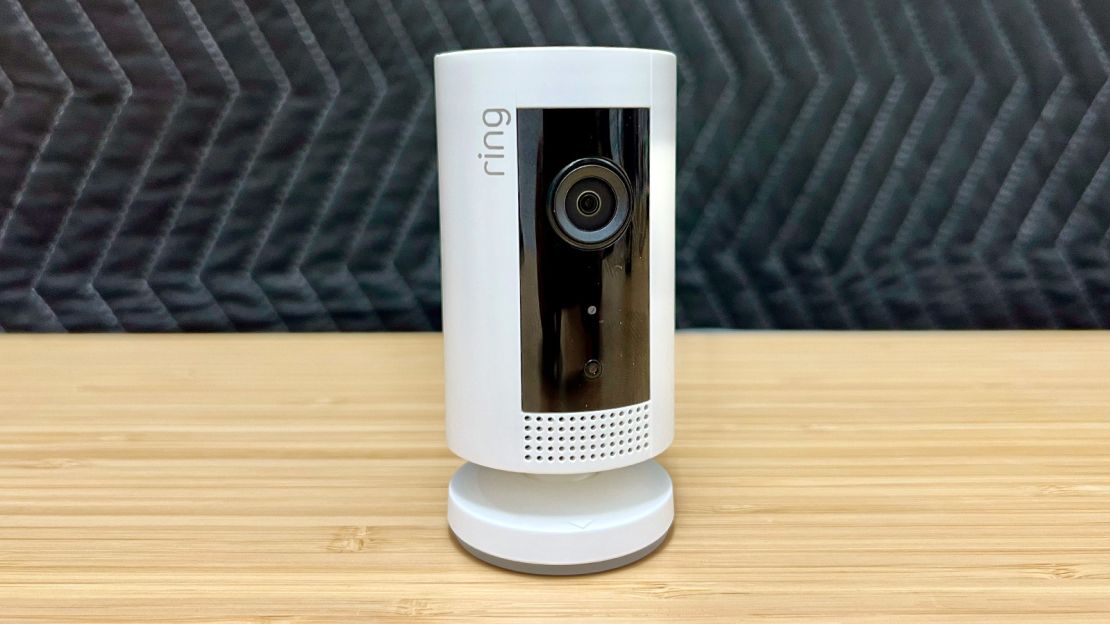
The Ring Indoor Cam is small and easy to place practically anywhere in your home. It records high-quality video, and its speaker sounds good. Ring is owned by Amazon, so the camera has tight integration with Alexa and Amazon Echo devices. Like other Ring cameras, it has some Google Assistant support, but it is limited; you can’t, for example, live stream video to a Nest Hub smart display.
The Indoor Cam records 1080p video, and has a color night-vision mode, two-way audio and a 140-degree diagonal field of view. That really breaks down to 115 degrees horizontal and 60 degrees vertical. In a side-by-side comparison, the FOV is nearly identical to the 130-degree field of view of the Arlo Essential Indoor Camera.
Ring’s app can use your location or schedule to control when the Indoor camera is recording. While you’re home, the system can be disarmed automatically, disabling recording, and when you leave, the camera or cameras can enter “Away” mode and return to full recording functionality.
The Indoor Cam is one of the smallest cameras out of our test group, its cylindrical body measuring 2.95 inches tall and 1.81 inches around. The base of the camera can be moved to the rear of the housing if you want to mount it on your wall, and all the necessary mounting hardware to do so is included in the box.
Like the Arlo Indoor Essential camera, the Ring Indoor comes with a 6.5-foot power cable and a wall adapter. If the cable is too short to reach an outlet from wherever you need to position it, you can get a 10-foot cable for $12.99.
Ring’s Protect plans give you similar service for roughly the same price as Arlo’s subscription plans. For $3.99 a month, you get video recording for a single camera, or $10 a month gets you recording for all of your Ring video devices. History is kept for up to 180 days, and you’ll get person alerts and discounts on future Ring purchases.
For those who already have a Ring video doorbell camera or another Ring security camera product, the Indoor Cam is an affordable and easy choice. Its video quality looks great and the audio sounds clear.
Best HomeKit indoor security camera: Logitech Circle View
$160 at Logitech and $140 at Amazon
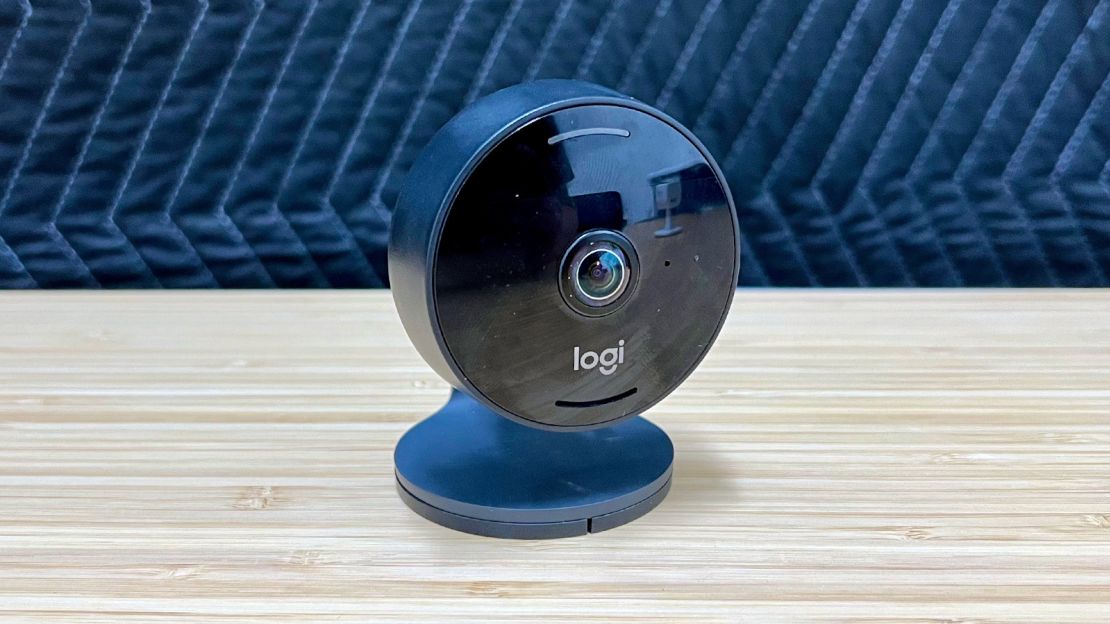
The Circle View camera from Logitech isn’t new — in fact, it was released in 2020 — but since then Apple has continued to update and add features to its HomeKit smart home platform. That’s benefited the Circle View significantly, adding features like improved automations and identification of animals and people as well as objects like vehicles and packages.
The 1080p camera has a 180-degree field of view, ensuring nearly everything in front of it is captured. And it automatically corrects for the wide lens, recording without a fish-eye effect on the resulting video.
Everything from initial setup to changing any settings or viewing live feeds of the camera can be done in the Home app from any Apple device you own. With Apple’s HomeKit Secure Video product, as long as you have an iCloud Storage subscription (even the $0.99 a month plan qualifies for one camera), any and all video captured by the Circle View is end-to-end encrypted and stored on Apple’s servers.
Even though videos are stored remotely, only you can access the files. You will need a HomeKit hub (an Apple TV, HomePod or HomePod Mini) in order to control and view your devices when you’re not home. It’s a good solution for Apple households, but since the Circle View isn’t compatible with Alexa or Google Assistant, you’re locked into Apple’s ecosystem.
The Circle View is designed for both indoor and outdoor use. While It performs well in either application (and was competitive among the cameras we tested to find the best outdoor home security cameras), we think it is more suitable for indoor applications since it has to be plugged in and, well, not too many people have electrical outlets on the outsides of their homes in locations suitable for putting up a security camera.
Plus, even though it’s a dual-purpose camera, Logitech included some indoor-friendly privacy features in the Circle View’s design. The stand that holds the Circle View up allows the front of the camera to be rotated down, towards the stand, so the camera can no longer see what’s going on in front of it. If you want to temporarily disable all audio and video recording, there’s a button on the rear of the circular housing that turns off the camera and microphone. An indicator light on the front of the camera lets you know when it’s off.
The Circle View’s privacy features, wide viewing angle and clear video makes it the clear winner among the cameras that support HomeKit Secure Video (others being the Eve Cam and the Ecobee SmartCamera). It’s more expensive than the Ecobee camera, but in our testing, the overall experience and quality justify the price.
How our recommendations compare
|
Best indoor home security camera overall
|
Best indoor home security camera on a budget
|
Best HomeKit indoor security camera
|
|
|---|---|---|---|
| What we liked about it | Good video quality, ease of setup, built-in privacy shutter |
Good video quality, compact design, feature set |
Wide field of view, consistent connection, good video quality |
| What we didn't like about it | Setup not as simple as similarly priced cameras from Nest and Ring |
Limited Google Assistant support |
New features and capabilities depend on Apple improving HomeKit |
| Key specs | 1080p video, two-way audio, 130-degree FOV, privacy shutter |
1080p video, two-way audio, 115x60-degree FOV, color night vision |
1080p video, two-way audio, 180-degree FOV, tilt for privacy |
| Price | $50 | $60 | $160 |
How we tested
In order to set a level playing field for testing our pool of indoor security cameras, I installed a total of 11 cameras in my home office. Each camera was placed on the same shelf, facing the same direction to achieve the same basic field of view. I’m in my office for several hours every day, coming and going, along with two dogs (helpful to test alerts for people and animals!).
Once the cameras were powered up and set up, I followed the instructions in every companion app to connect the camera to my home’s Wi-Fi network. I followed the rest of the setup instructions, if any, in the app. If the app didn’t ask me to set up an activity zone during the initial setup, I’d go through the settings for each camera and ensure the activity zone was set to watch the entire field of view. Additionally, I’d ensure the settings matched as closely as possible across all different camera makes and models.
The cameras were set up and running for roughly two weeks, with — literally — thousands of motion alerts bombarding my iPhone during that time. I’d monitor for alert timeliness, accuracy and any false alerts. I also tested the quality of two-way talk on both ends of the conversation.
Lastly, I also took into account the various subscription models for storing video clips, along with the overall warranty.
What to look for in an indoor home security camera
Shopping for an indoor home security camera is simpler than looking for an outdoor security camera, largely because powering an indoor camera is simpler. Outdoor cams require either hardwired installation (which requires some handiwork on your part, or a call to an electrician) or run on batteries (which require periodic vigilance). Indoors, it’s a lot easier. It’s usually possible to find a nearby electrical outlet for dependable power, the only real limitation being the length of the power cord (though with many models using standard USB connections for power, it’s easy enough to swap out to suit your desired placement).
While most of us expect outdoor cameras to capture video continuously, indoors it’s a different story. Recent revelations of security problems at major brands — most visibly the FTC’s multimillion-dollar judgement against Amazon for lax security protocols and poor data handling practices on the Alexa and Ring platforms and Wyze’s slow response to data breaches stemming from vulnerabilities in its cameras — have highlighted the need to pay careful attention to the issue.
While Amazon states that it has since addressed the issues raised in the FTC inquiry, it’s still worth considering with regard to whatever camera you choose. Privacy is a big concern for devices that we must live with, and we suggest looking for a camera with solid privacy features — we’re talking about physical privacy shutters — for when you’re at home, or you can consider not using the cameras while you’re at home. Our most private moments occur inside our homes, and having an always-on and constantly recording device can be a scary thought, especially when you have little control over your video data stored on far-flung company servers.
Battery-powered indoor cameras do exist, and are useful for placements where you don’t want to or can’t run a power cable or if you have an older home with fewer outlets. But they also require more management, since you have to remember to charge the battery once it’s depleted. Not a deal breaker, but if you’re anything like me, you’ll get the alert that the battery is almost empty and put off charging it for a few days or longer.
As with all smart home devices, ecosystem compatibility is important — you’ll want to choose what works with your mobile devices and with the rest of the stuff you have. Make sure the cameras you’re looking at support your platform of choice, be it device-specific such as Ring or Nest, or major manufacturer protocols like Alexa, HomeKit or Google Assistant. You’ll get the features you want, updates and cloud storage plans.
If you’re not interested in any of that (and you don’t want to pay a monthly fee), look for a camera with local storage. While they aren’t as common, some indoor home security cameras can record video directly to memory cards or external drives. Generally features are more limited, but the best ones at least have basic alerts and let you livestream for monitoring your home while you’re away.
Look for automation to turn the camera and microphones on and off as you leave home and arrive, whether that’s location-based (geofencing) or simple scheduling. We like privacy shutters, which provide a physical barrier to recording (as featured on our top pick) and lights that clearly signal whether recording is taking place.
Other indoor home security cameras we tested
Abode Cam 2
$34 at Amazon
The small, inexpensive Abode Cam 2 is weather-resistant and can be used inside or out, but its design is unobtrusive and attractive so it works well indoors. It records 1080p video at 20 frames per second, which doesn’t sound bad and often looks alright, but at times can leave a lot to be desired thanks to choppy video.
The Cam 2 is part of Abode’s complete home security system, which offers all of the typical sensors, complete with 24/7 monitoring, but it can also be used standalone
Blink Mini
$35 at Amazon
Blink cameras typically require a sync module (basically a miniature hub that can manage up to 10 Blink cameras), but the Mini indoor camera can work on its own, connecting directly to your Wi-Fi network. The small design is welcome, but the overall video quality is where the Mini is lacking. Don’t get me wrong, it looks good, but compared to similarly priced cameras, it’s worth paying extra for a better-looking picture.
Eufy Security Solo IndoorCam C24
$43 at Amazon
Formerly our pick for a subscription-free camera, we’re holding off on recommending Eufy security cameras for the time being given information that has recently come to light
A security researcher has discovered that despite the company’s claims to the contrary, Eufy’s cameras have been sending video to its cloud, even when the user has cloud storage disabled, opting for only local storage. This feature is what made Eufy cameras popular and attractive to the security conscious, so this behavior is likely to alienate many users. Additionally, those same video streams from Eufy cameras were sent to its servers in an unencrypted feed and could be accessed by anyone with knowledge of how to find the feeds.
Should these issues be addressed, the Eufy Security Solo IndoorCam supports local storage via a microSD card, saving you money by letting you avoid monthly subscription fees for a cloud storage plan. The Eufy is a basic camera design without any frills, and it performs similarly. Setup is straightforward, and it delivers solid, usable video quality, though it’s not on par with the footage produced by our top cloud-backed picks.
The Eufy Security Solo IndoorCam has very broad platform support — you can connect to Alexa, Google Home or Apple’s HomeKit platforms to view a live stream. And while it doesn’t offer object recognition as granular as our other picks’, it can determine whether it’s looking at a person or an animal, and you can set an area in the field of view to monitor for an animal and then tell your dog or cat to get down if your pet isn’t supposed to be on the couch or counter. It’s a well-rounded and affordable camera that fell just short in our testing, and if the company addresses its security issues we will examine it again.
Nest Cam (Indoor, Wired)
The Eufy isn’t as feature-packed as offerings from Arlo, Ring, Logitech or Nest — those cameras and the platforms they rely on offload computationally intensive services like object and person detection to company servers, letting the little cameras punch above their weight.
$100 at Amazon
The Nest Cam (indoor, wired) is small and totally adorable. (It reminds me of a character I’d expect to see in an animated movie, but I digress.) Nest’s dedicated indoor camera has a wide field of view, great video quality and smart features that compete with our top picks. But it’s best used with the Nest app, and its supporting plans work best if you have multiple Nest devices.
If you’re heavily invested in Google’s ecosystem of products and services, it’s a pick you’re sure to be happy with.
Nest Cam (Outdoor or Indoor, Battery)
$180 $159 at Amazon
Google’s Nest Cam (outdoor or indoor, battery) can be hardwired or run off of a rechargeable battery. It uses a similar design to the wired indoor version, only it’s about three to four times larger to accommodate the battery pack. Video quality is good, and it has integrations wtih Google Home and Alexa and smart alerts, but the large housing makes placement difficult and the high overall cost means it’s probably not worth it unless you are invested in Nest gear and absolutely need to install somewhere that isn’t near an outlet.
Ring Stick Up Cam Battery
$100 at Amazon
If you need to mount a camera far from an outlet (say, up near a ceiling), Ring’s Stick Up Cam Battery offers versatility in placement and eliminates the need to run a cord up your wall. The Stick Up Cam features all of the staple Ring features such as deep Alexa integration.
But as with Nest’s battery-powered camera, its overall large size (to make room for the battery) and high price relative to Ring’s Indoor Cam mean the Stick Up Cam is a better fit only if you absolutely need to deal with difficult placement.
Ecobee SmartCamera
$99 at Amazon
Ecobee’s SmartCamera can be used either directly with Ecobee’s own security service or with Apple’s HomeKit. It also doubles as an Alexa-equipped smart speaker you can talk to and interact with. You can pan and tilt the camera’s view within the Ecobee app, but the side effect of that feature is a fish-eye look to the video, impacting the overall image quality.
It’s one of the biggest indoor cameras out of the test group, which means it may be difficult to place unobtrusively in your home.
Eve Cam
$150 $129 at Amazon
With support for Apple’s HomeKit platform, the Eve Cam integrates directly with the rest of the Apple hardware in your home. It has a simple design with a magnetic base for easy mounting using the included mounting plate.
Video quality is good, but during testing, the Eve Cam was the only HomeKit-enabled camera that saw frequent disconnects from the network, ranging from a few seconds to an hour or longer.
